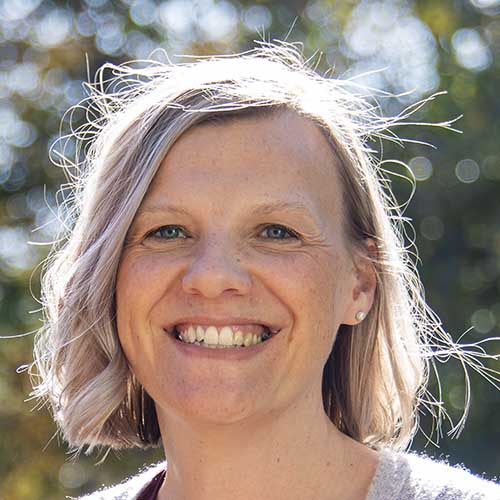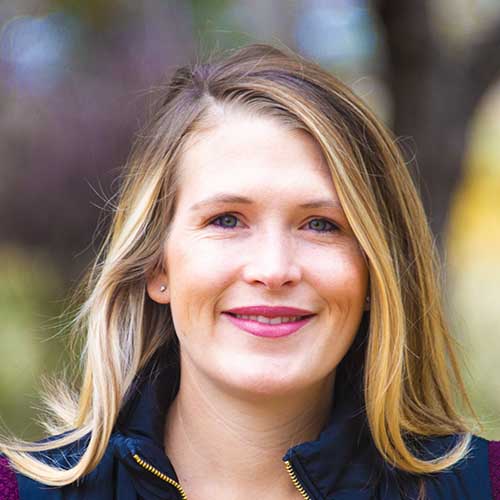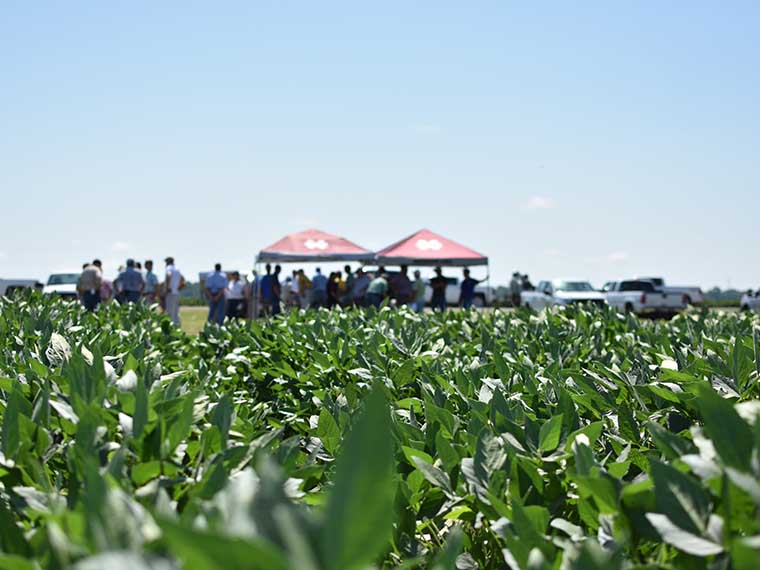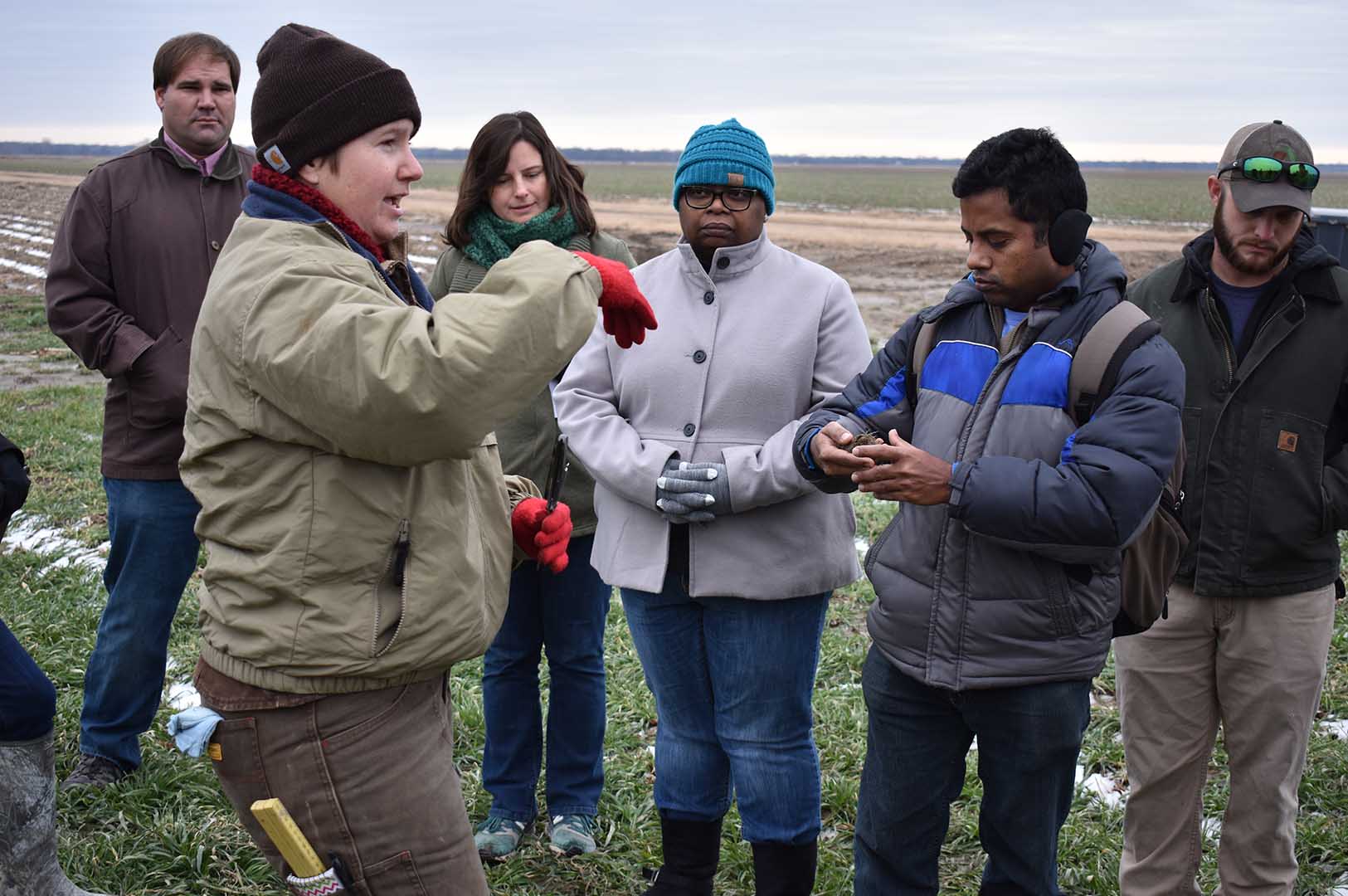The information presented on this page may be dated. It may refer to situations which have changed or people who are no longer affiliated with the university. It is archived as part of Mississippi State University's history.
There are plenty of agronomic and economic factors to consider when producers decide to implement cover crops into their operation. From which types of cover crops to plant to what cash crops will follow to the cost-to-benefit ratio, local producers have plenty of decisions to make when it comes to selecting the right cover crop system. Additionally, these agronomic and economic factors are further influenced by environmental goals the producer hopes to attain through implementing the practice. Goals may include reduced soil compaction, increased organic matter, nutrient management, erosion control, or a combination thereof.
In the world of cover crops, it is increasingly clear that there are many considerations a producer must weigh. That's why scientists in the Mississippi Agricultural and Forestry Experiment Station are investigating how all these factors come into play when it comes to incorporating cover crops into a row-crop production system in the Mississippi Delta. The project, led by Dr. Joby Czarnecki, assistant research professor in the Geosystems Research Institute and a MAFES scientist, assesses the benefits of cover crops on soil fertility, economic value, and water quality.
"We hope to quantify improvements in both the soil and surface water as well as gauge the economic considerations. We also plan to synthesize the data to predict long-term outcomes which inform future policies and programs while also engaging in effective extension and outreach to transition results to practice," Czarnecki said.
The three-year project, funded by a USDA NIFA CARE (Critical Agricultural Research and Extension) grant, encompasses six study sites in the Mississippi Delta stretching from Rolling Fork to Clarksdale along the Highway 61 corridor. In addition to MSU, collaborators include the University of Kentucky; Delta F.A.R.M., a non-government organization of growers and landowners advocating environmental stewardship and sustainable agricultural practices; an agricultural consulting firm; and area growers.
Twelve fields at six sites ranging from 30 to 80 acres were studied for two years, with a third year underway with funding from other sources. At each site, the treatment field was managed with cover crops and minimum tillage and the control field was managed in accordance with each grower's prior management practices. Each side of the field had implemented the same irrigation and nutrient management practices, such that any differences between fields were solely related to the addition of cover crops and minimum tillage. The treatment field was planted with a four-way cover crop blend including cereal rye, oats, vetch, and Austrian field pea.
Czarnecki said the project utilizes several precision agricultural tools. For instance, by partnering with Delta F.A.R.M., the research team had access to equipment purchased from Delta Precision. The data provided by the precision planting equipment was valuable in explaining yield variability within the study fields.
"We have spatially explicit data on the planter, so we know what's happening at the seed level. We can compare that information with yield data to determine if reduced yield is influenced by problems with planting, which in some cases has happened," she said.
The team is also supplementing the research with UAVs to measure biomass and plans to use the information along with slope, rainfall, and soil composition data to generate computer models of soil loss from fields.
"Many soil erosion models tend to be short term while geological models are intended to cover several decades. Our hope is that by incorporating our data into a downscaled landscape evolution model like those used in geological research, we can better predict the long-term benefits of cover crops," Czarnecki explained.
She pointed out that the soil data, which is still being analyzed, has been collected by Southern Ag, a consulting group based in Starkville, Mississippi. She said that the relationship has helped broaden the research capabilities of the project.
"Because we had the sites up and running, they were leveraged by other researchers for their projects, and that has resulted in more effort and data collection than we proposed to USDA. It's been exciting to see how people joined us and worked with us to improve everyone's research," said Czarnecki, who added that while the initial grant was $300,000, the funding for the combined research on the sites total about a million dollars.
Since her days working at the local co-op in her hometown of Cherokee, Oklahoma, Czarnecki has always had a passion for helping growers, something she says is the project's main goal.
"My genuine goal is to serve growers and give them the answers they need. It's exciting to be a part of a project that has a direct connection to the growers. I get to talk to them and hear about what they are seeing. It's nice to be connected and hands-on with them through this process," she said.
Like Czarnecki, Dr. Jordan Shockley, assistant extension professor at the University of Kentucky, is excited to work with growers on this project. Shockley, who grew up in eastern Maryland, worked on farms as a teenager.
"My first job was in a poultry house and I've worked on everything from grain farms to buffalo farms," Shockley said. "My dad and I were hobby fisherman, so I saw firsthand the issues happening with nutrient runoff in the Chesapeake Bay while growing up."
Shockley said working with growers in Mississippi to better understand how cover crops might increase environmental stewardship in the Magnolia State has been rewarding.
"The thing I've enjoyed the most about this project is interacting with Delta farmers and seeing their eagerness to work with us to help answer the important and challenging question of whether or not the benefits of cover crops outweigh the costs," Shockley said.
On the economic front, the researchers have created a basic cost analysis tool but need to add a benefits component to it.
Shockley said the team has developed an excel-based tool called "Economic costs for establishing and terminating cover crops" that's more robust than other tools available.
"The tool takes into account planting and termination methods, whether that's drilling or broadcast at planting and crimping verses herbicide application at termination," Shockley said.
He said while the tool has calculated the cost of planting cover crops, estimated on average around $70 dollars an acre, version 2.0 of the metric will include the net benefit of a cover crop system.
"Once we learn more about the short-term economic benefits that growers receive from selecting cover crops, we can add those into the system," Shockley said. "These benefits might include NRCS program incentives, reduced irrigation and herbicide applications, and less soil compaction, just to name a few."
Shockley points out that while there is plenty to learn, the team is excited to quantify the economic costs and benefits in comparison to what's happening on an agronomic and environmental scale.
"It's a huge learning curve but one thing we've figured out is that cover crops are a long-term investment. Initially, we may see a higher economic cost but if we can determine short- and long-term economic benefits, including what kind of programs can help offset those costs, we can find the least expensive way to implement a cover crop system while still reaping the agronomic and environmental benefits," he said.
Dr. Beth Baker, assistant extension professor in the Department of Wildlife, Fisheries and Aquaculture in the College of Forest Resources, is also on the project assessing water quality and leading the Extension efforts. The team has a graduate student focused on assessing water quality as well. Preliminary results presented by plant and soil sciences master's student, Beau Badon, indicate reduced total suspended solids in runoff from corn-soybean rotation production systems annually and during the winter months.
Baker said studying cover crops in the Midsouth presents a unique set of challenges and that the work is made easier through strategic partnerships like the one with Delta F.A.R.M., which provides the equipment and helps manage the sites.
"We had been challenged to determine if cover crops were a viable conservation practice in the Midsouth," Baker said. "But like any emerging technology, it takes time to learn how to integrate the new research into our current production systems. And the challenges in our region are different than in other regions where cover crops are heavily utilized."
Baker pointed out that some of those challenges aren't easy to overcome.
She continued, "It can be difficult to build organic matter in the South with relatively warm temperatures and humid conditions. Another problem is to determine how cover crops could be more cost-effective. The farmer's existing crop rotations are also important to consider. But the long-term goal is to determine if the benefits outweigh the challenges. Some of those potential benefits that support water management and protecting water quality include decreased soil compaction, reduced nutrient loading, infiltration potential, and erosion control. It is also important to remember that there is a considerable value just from the conservation perspective, but that's typically harder to quantify economically."
Czarnecki feels that more time is needed to fully understand what value the conservation practices may offer.
"The thing about management practices is that we've spent years optimizing systems for cash crops. For instance, we have farming corn down to a science. Simply put, we don't know what that system looks like when it involves cover crops," Czarnecki said. "We need more time to develop this formula like we've done with our current systems. Through this project, we learn a little each year and we make changes. When we ask farmers what they want, they want reliable data on cover crops for this area. Our goal is to give them the data they need to make the best decisions they can when it comes to incorporating cover crops into their production system, not to force fit them into practices that do not make sense in their operation."
This research is funded by USDA NIFA CARE. Partners include Delta F.A.R.M., Delta Precision, and Southern Ag. In addition to Baker and Czarnecki, Drs. Billy Kingery and Shankar Ganapathi Shanmugam, MAFES scientists in the Department of Plant and Soil Sciences, are performing DNA analysis on the soil. Shanmugam and Kingery work in the department's Soil Microbiology Lab.
We've spent years optimizing systems for cash crops. For instance, we have farming corn down to a science. We need more time to understand what that system looks like when it involves cover crops.
Dr. Joby Czarnecki
Behind the Science

Joby Czarnecki
Assistant Research Professor
Education: B.S., M.S., Plant and Soil Sciences, Oklahoma State University; Ph.D., Plant and Soil Sciences, Mississippi State University
Years At MSU: 15
Focus: Geospatial and precision technologies for agriculture
Passion At Work: I want to provide scientifically-verified information for producers so they can make informed decisions about which technologies will support their efforts to farm sustainably and profitably.

Beth Baker
Assistant Extension Professor
Education: B.S., Biomedical Science, M.S., Cell and Molecular Biology, St. Cloud State University; Ph.D., Forest Resources, MSU
Years At MSU: 8
Focus: Integrated natural resource management
Passion At Work: Protecting our fundamental resources and ecosystem services to meet the most basic human needs, the varied needs of modern societies and economies, and to protect the environment.


